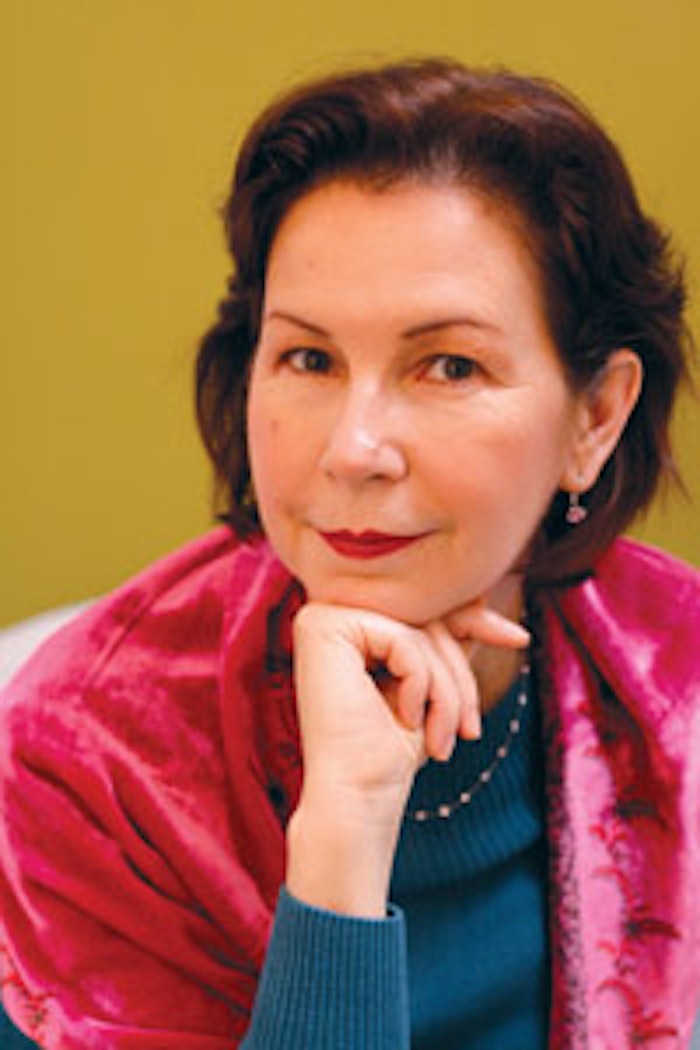
Turn the pages of the Fall 1988 issue of Skin Inc. magazine, and the first column you’ll see is “Q & A” written by Marion Simms. She tackled questions about tretinoin, the topical form of vitamin A; sterilization and sanitation; and the risks of indoor tanning. She also served on the magazine’s advisory board through December 2001.
Inspired by her parents, who were both independent business people, she left a corporate job at an oil company to study for a career in skin care. After graduation in the late 1970s, Simms worked for Guinot in Europe and South Africa, until company owner Michael Thibiant offered her a new position in the United States. In 1982, she traveled from England with the desire and independent spirit to find opportunities that have kept her at the top of her game.
Once settled, she opened SkinSense in Los Angeles, and offered skin care and body services. She also was a member of the Society of Cosmetic Chemists (SCC) and, in the late 1980s, expressed concern about the lack of postgraduate esthetic training in this country. An SCC chemist she knew put her in touch with Jean Allured, a publisher who was launching Skin Inc. magazine to help fill the void and offer estheticians more technical information and procedure how-tos. That sparked the business relationship between Simms and Skin Inc. magazine.
“For the most part, in the 1980s, the training focus was on state-level licensing with no real postgraduate training,” Simms says. She will agree that education today has evolved, including information about cosmetic chemistry, but also will be the first to add that there’s still more work to be done.
According to Simms, the learning curve has risen because there’s a new breed of clients—they are savvier, more retail-oriented, and they know what services they want. “They have a better appreciation for their skin on a day-to-day basis. For example, in the 1980s you couldn’t get clients to use sunscreen; now they won’t leave without it,” she says.
“Skin care is quite the viable business opportunity,” Simms says. The recession was challenging for her, but she feels very fortunate to have had social media strategies in place before it hit hard. “To help the environment, I had stopped using postcards, and was using e-mails and e-blasts. That led to a presence on Facebook, Twitter and Yelp, which helped increase word-of-mouth. It was all quite serendipitous,” she says.
“Reinvention is the key. There’s a new normal now—we can’t go back,” she says. Her advice to estheticians starting out: Ask yourself if you really like people. “You work with people 8–12 hours daily and they bring in all of the stuff from their lives. You have to enjoy people, and it’s not always easy. Skin care is a very ‘public’ service. This is a great business for creative, independent-thinking, flexible, friendly people who love working in an ever-evolving environment,” she says.
“Working with a client is like peeling an onion—you reveal one layer at a time. Yes, your ultimate goal is to fix the skin, but first you need to analyze—this will tell you a lot about your clients’ lifestyles—and then you can begin to correct,” she says. There’s a connection between skin health and a client’s psychological approach to things. Our industry can help with self-worth and self-esteem. We can help clients who are on antidepressants, or with diabetes or heart disease make healthier choices in their lives and see the results on their skin. It’s a transformative process.”
Today, Simms uses a variety of product lines that include Guinot, 302 Professional Skincare, Circadia by Dr. Pugliese, the Essential 3 aromatherapy line, glōminerals and PCA Skin.
Spas grew from the concepts of the beauty salon, to the full-service salon, then the day spa, which was further defined as destination or medical, and now there are full skin care wellness centers. Although ingredients such as vitamin A derivatives and various electrotherapy methods have stood the test of time, there have been changes in the skin care industry. “There’s definitely been a paradigm shift. Yes, we’ve evolved substantially,” says Simms. “But one thing is for sure. You will never be able to replace the human touch. No robot will ever be able to do that.”
Award-winning writer Lois Hince has been with Allured Business Media for 20 years and currently is the company’s corporate managing editor.










